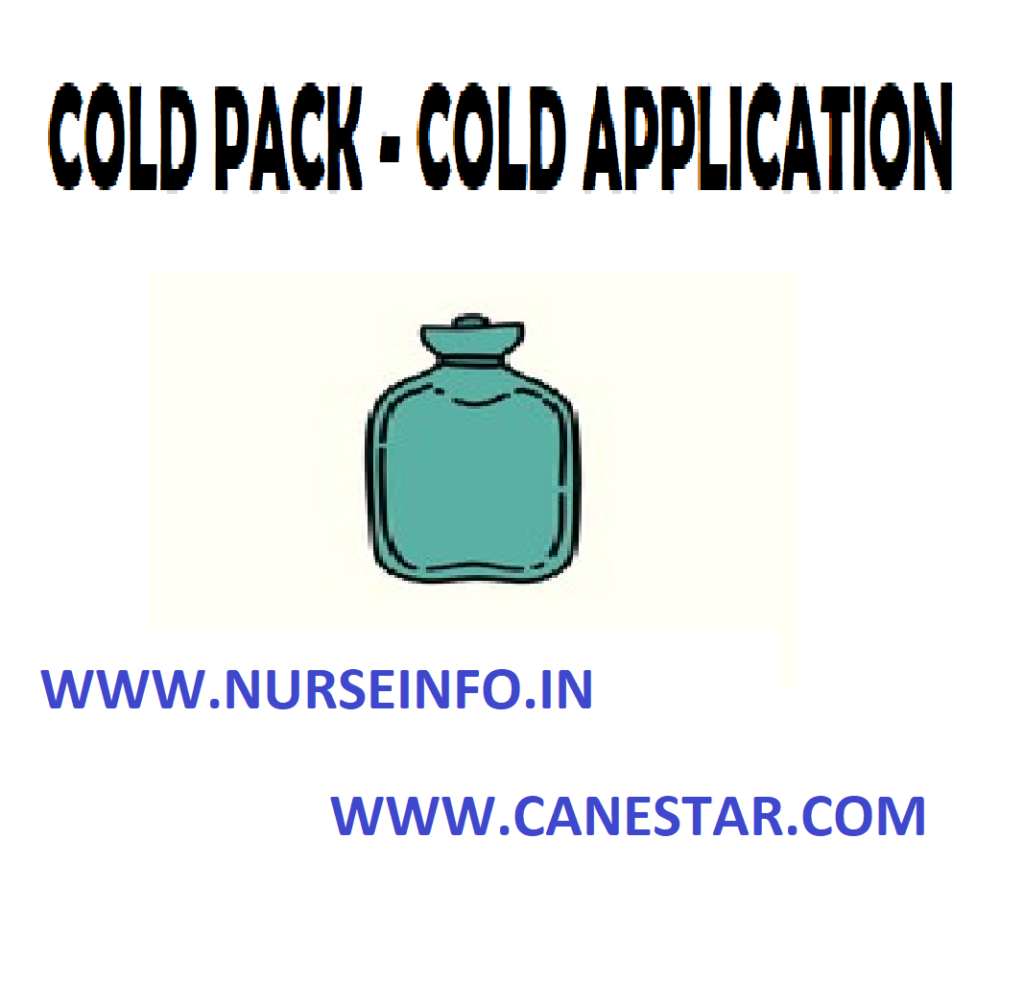COLD PACK (Cold Application) – Definition, Purpose, General Instructions, Preliminary Assessment Check, Effects, Physiologic Effects, Indications, Preparation of the Patient and Environment, Equipment, Procedure, After Care and Contraindications
Cold pack is defined as application of moist cold when temperature rises to 104 degree F and above.
PURPOSE
- To reduce temperature above 104 degree F
- To treat heat stroke and malignancy hyperthermia
GENERAL INSTRUCTIONS
- The pack could be a wash cloth, flannel or a piece of old linen depending up on the size of the body part to receive the application
- A basin of cold water is prepared and the packs are immersed into it
- When cooled, the excess water is wrung out and the pack is applied to the body area. Replace the packs as necessary to maintain
CONTRAINDICATION
Circulatory disorders like peripheral vascular diseases
PRELIMINARY ASSESSMENT
Check
- Check the doctor’s order for any specific instructions
- General condition and diagnosis of the patient
- Self-care ability of the patient
- Duration of the treatment
- Articles available in the unit
PREPARATION OF THE PATIENT AND ENVIRONMENT
- Explain the procedures to the patient
- Provide privacy
- Arrange the articles at the bed side
- Place the patient in comfortable position
- Place the Mackintosh under the patient
EQUIPMENT
- Long Mackintosh
- Bed sheet – 2
- Bath towel – 6
- Cold compress and ice cap equipments
- Bucket of cold water
- Bath thermometer
- Bowl with crushed ice pieces
- Hot water bag
PROCEDURE
- Wash hands
- Pour cold water into basin; add ice cubes to bring temperature to 65 degree F and wet bath towels
- Remove top sheet and protect bed with long Mackintosh and big sheet
- Remove patients cloths, cover with wet bath towel from chest to pubic area
- Place compress on forehead, ice cap on head and hot water bag at feet
- Wrap hand and legs with wet towel
- Check the temperature every 15 minutes and replace wet towels
- Continue procedure for 30 minutes
AFTER CARE
- After completing procedure, remove towels and dry patient thoroughly
- Remove Mackintosh and sheet change wet sheets
- Dress patient and cover with top sheet
- Keep patient in a comfortable position
- Replace the articles after cleaning
- Wash hands
- Record the procedure in nurse’s record sheet and vital signs in TPR sheet
Cold, moist compresses are used to reduce swelling and inflammation in soft tissue injuries or after tooth extraction. The size of the compress depends on the area to be treated. Gauze 4 multiply 4 inch pads are frequently used for tooth pain. They are applied externally and are changed frequently because they warm rapidly, thereby losing their effectiveness. In practice, the ice cap, ice collar, or ice bag is a dry cold application. The ice cap, used for the head, has a wide opening that allows it to be filled easily with ice chips, as does the ice collar, a narrow bag curved to fit the neck. Single-use ice bags are frequently used. The primary provider may prescribe dry cold to treat a specific area of the body


